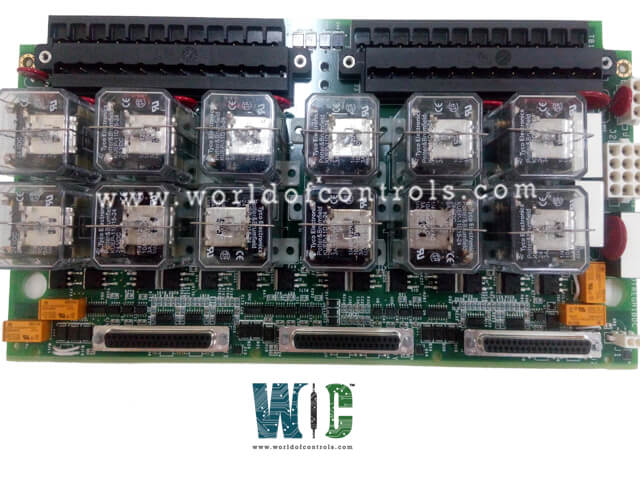SPECIFICATIONS
Part No.: IS200TREGS4B
Manufacturer: General Electric
Series: Mark VIe
Technology: Surface mount
Suppression: MOV across the solenoid
Relay outputs: Three
Trip interlock isolation: Optical isolation to 1500 V on all inputs
Trip interlock filter: Hardware filter, 4 ms
Availability: In Stock
Country of Manufacture: United States (USA)
Functional Description
IS200TREGS4B is a Turbine Trip Emergency Board developed by GE. It is a part of Mark VIe control system. In Mark VI systems, the TREG terminal board works in conjunction with the VPRO (Voted Protection) module, which coordinates the voting logic for the trip solenoids. The connection between the TREG and VPRO is established using cables with molded plugs, ensuring secure and reliable communication between the components. The terminal board, with its control over emergency trip solenoids and its integration with the I/O controller and VPRO module, plays a pivotal role in ensuring the safe and efficient operation of gas turbine systems. Proper maintenance, board selection, and adherence to design specifications are essential for maintaining the integrity and reliability of these critical systems.
Features
- The board is equipped with three master trip relays (K4X, K4Y, K4Z), which disconnect the 28 V DC bus from both the Emergency Trip Relays (ETR) and Economizing (KE) relay coils during a manual emergency trip event.
This immediate disconnection ensures a rapid shutdown response, effectively isolating the turbine control circuits and preventing continued operation under unsafe conditions.
- Any trip signal, whether initiated manually from the TREG board or automatically from the VPRO (e.g., via the Emergency Overspeed System - EOS)—is communicated through the IONet to the control module. This function allows the system to identify the origin of the trip command, supporting quick and accurate troubleshooting and minimizing system downtime after a trip event.
- The K4CL servo clamp relay provides an added layer of safety. Upon energizing, it sends contact feedback directly to the TSVO (Servo Terminal Board).
When activated, the TSVO board disconnects the servo current source and applies a bias signal to force the control valve to close, ensuring safe turbine shutdown.
This feature is particularly important in simplex system configurations, where it protects the turbine against conditions such as a servo amplifier failure in a high-output state, enhancing both safety and system dependability.
Operation
- TREG is under complete control of the I/O controller, with its interactions limited to just two connections - the J2 power cable and the trip solenoids. In cases involving simplex systems, an additional third cable is employed to transmit a trip signal from J1 to the TSVO terminal board.
- This specific cable serves the crucial role of enabling a servo valve clamp function during turbine trips, enhancing system stability and performance.
Solenoid Trip Testing
- The controller's application software serves as the means to initiate tests on the trip solenoids. Online testing capabilities enable the individual tripping of each solenoid, either through the PTR relays controlled by the controller or via the ETR relays originating from the protection module. A contact from each solenoid circuit is connected as an input, ensuring a positive indication that the solenoid has been successfully tripped.
- Moreover, the system offers primary and emergency offline overspeed tests to confirm the actual trips resulting from software-simulated overspeed conditions. These tests provide a comprehensive verification of the system's response to various trip scenarios, ensuring its reliability and safety.
Product Attributes
- Trip Solenoid Circuits: The circuits are designed to meet NEMA class E creepage and clearance standards, ensuring safe and reliable operation. All circuits are capable of handling the load and can safely clear a 15 A fuse even when fully loaded.
- Solenoid Response Time: The solenoid response time is defined by a low L/R time constant of 0.1 seconds. Additionally, a suppression MOV (Metal Oxide Varistor) is implemented across the solenoid to manage electrical noise and enhance performance.
- Relay Outputs: There are three economizer relay outputs, each with a delay of two seconds before energizing. The system also includes a driver-to-breaker relay, K25A on TTUR, and a servo clamp relay on TSVO for precise control and protection.
- Solenoid Control Relay Contacts: The relay contacts are rated to effectively interrupt inductive solenoid loads operating at 125 V dc and 1 A, ensuring reliable control and safety. The system can accommodate a bus voltage range from 70 to 145 V DC, providing flexibility in various operating conditions.
- Trip Inputs: Seven trip interlocks are integrated into the system and connected to the I/O controller protection module, operating at 125/24 V dc for comprehensive protection and control. Dedicated hard-wired emergency stop trip interlock operating at 24 V DC to ensure swift and reliable emergency shutdown capabilities.
World of Controls has the most comprehensive collection of GE Mark VIe components. Please contact WOC as soon as possible if you require any extra information.
Frequently Asked Questions
What is IS200TREGS4B?
It is a Turbine Trip Emergency Board developed by GE
Why would someone want to disable the second emergency stop input?
In some installations or applications, the second emergency stop input may not be necessary or required. Disabling it using the jumper ensures that the system functions as needed without unnecessary inputs.
Is the jumper a permanent configuration, or can it be changed later?
The jumper configuration is not permanent and can be easily changed if the system requirements or setup change over time. Users can adjust the jumper as needed to adapt the terminal board to different scenarios.
Is there any documentation or labeling on the terminal board to indicate the jumper's purpose and location?
Yes, the terminal board typically comes with clear documentation and labeling that indicates the purpose and location of the jumper. This ensures users can easily identify the correct terminals to bridge when configuring the board.
